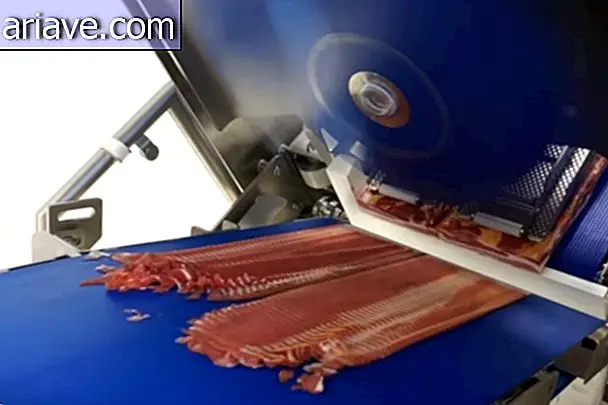Want to be creative? So don't trust these 5 dangerous myths on the subject.
One of the biggest fears of those who study for college entrance examination or competition is writing, after all there is no formula for reaching an ideal result, and there is always some teacher saying that all we need is creativity - as if it were that easy. Creating something new, which is the basic principle of creativity, is still a seven-headed animal for many people.
To make matters worse, we're used to hearing people say that creativity is a natural talent - born without, gone - or that it depends on inspiration, which is probably one of the most impalpable things in the universe. Inspiration can be anything. It could be the bizarre cloud in the sky or a nice old man sitting on a square bench. And when we open the fan, it's even more complicated to find out what inspires us ...
With every recipe for creative work, new leagues form in the caraminhola that is your little head - we know. The good news is that you can breathe a sigh of relief - much of what you have learned about creativity is nothing but fudge, bullshit, small talk. Life Hacker has gathered some myths about the creative process, and of course we'll share with you right now:
1 - Creativity is something that is born with you

Lie, right? Have you ever seen a newborn mother say that the baby has his father's eyes and his grandfather's creativity? So. This kind of statement only discourages those who seek to exercise their creativity or begin to develop it.
The idea that creative parents have creative children may even make sense, but this is probably because these children received early stimuli, which only confirms that, yes, creativity can be taught.
Remember that story that one side of the brain is more creative than the other? Many tests in this direction encourage people to find out which side controls their lives, but the truth is that modern neuroscientists have done research to prove that this division into the creative side and the non-creative side makes no sense after all.

This scientific confrontation arose from the fact that recent research has shown that various brain regions are activated by creativity, creating a network of cognitive and emotional connections that cannot be limited to just one side of the organ.
Basically what we need to understand is that creativity is the work of many brain regions - and there are no unfortunate people born without those regions. Simple.
Reducing the creative process to something considered "from birth" is wrong and unfair to those who train their mental capacity often. Walt Disney was fired in 1919 from a newspaper. The publisher's justification? The guy had little imagination and no really good ideas. Jeez.
2 - Inspiration is not controlled

In some cases, yes, you have a completely new idea without expecting it, but inspiration can come from practice as well. Right here at Mega Curioso we have already given a valuable tip to those who need to have a good idea: go for a walk around.
The truth is that some new research suggests that these creative insights that happen when we are bathing or taking a walk in a park come only from people who work on their creative side. It's not magic, friends, it's training. Just as the person who wants to have defined muscles gets heavy at the gym, those who want good ideas need to train their minds.

According to Harvard psychologist Shelly H. Carson, these insights are the result of an “incubation period” when the mind forgets about everyday problems and begins to make new brain connections. This phenomenon is known as "divergent thinking, " and is one of the foundations of creativity. So if you're wondering how you train your mind, here's a good way: by doing different things and letting problems go if possible.
Looney Tunes cartoonist Chuck Jones once said that 100, 000 bad illustrations must be done before anyone can be considered a good illustrator. Another person who makes it clear that the business is getting his hands dirty is photographer Chuck Close, who says "inspiration is for amateurs - the rest of us just show up and do their jobs."
3 - Creativity is not learned

Well ... If there is one thing we hope you have understood so far, it is precisely that creativity is learned, yes. People are used to thinking of creativity as a quality or a characteristic, as we explained in the first item, with which some people are born and others not.
Alex Osborn, who was the one who simply created brainstorming - a well-known exercise by the Advertising, Creation and Marketing guys - also started the Creativity Studies Center in New York. For those who work there, it is quite clear that creativity is something that can be taught.
For example, it has been proven that veteran writers with at least 10 years of experience have more worked brain areas of creativity than novice writers. This shows us, once again, that it is all a matter of training.
4 - To create, you must be isolated

The idea that good ideas emerge in moments of solitude and isolation is, to say the least, wrong. At Pixar, for example, illustrators and the creative team hold meetings to discuss ideas, listening to hunches and suggestions from everyone involved.
Group breeding is used long before any research on the subject has been carried out. Did you know, for example, that JRR Tolkien, CS Lewis, and Charles Williams were in a creative group called Inklings? Basically the writers met informally in bars or at someone's house to show their drafts and listen to the opinions of others. Needless to say, the tactic worked, didn't it?
In fact, one of the stories involving the Inklings meetings is about Lewis having to convince Tolkien that “The Lord of the Rings” was good enough to be published. In this case, our eternal thanks to Lewis.
5 - Creativity is something that has plenty of time

In fact, not quite. Imagine that you will have a month of vacation and you will not travel during that time. You wake up late, watch cartoons (no matter how old you are), eat your lunch sandwich, and watch TV. So where does creativity come into this story?
In the Middle Ages, creativity was seen as a kind of divine inspiration; In the Renaissance, more people became responsible for the creation of great works of art - as long as they were, of course, great talents such as Da Vinci, Michelangelo and Botticelli.

Already in the 19th and 20th centuries, creativity became capable of separating individuals by social class and status. This status thing has strengthened the idea that creativity is for those who have plenty of time, do nothing, don't have to work to pay the bills, and so on.
However, look, some recent research suggests that creativity is more present in people living with some sort of social, financial or even resource constraint at work.
A study by the University of Amsterdam found that when people are having a hard time, they are forced to step back, look at the whole thing in a different way, force their brains to create new connections, and from there, perform what is called “global processing, ” which is one of the foundations of the creative process.
***
It is very convenient to use some of the above excuses to not be creative, but ideally go after, get help, read, write, draw or do whatever makes you happy. The key word is training.











